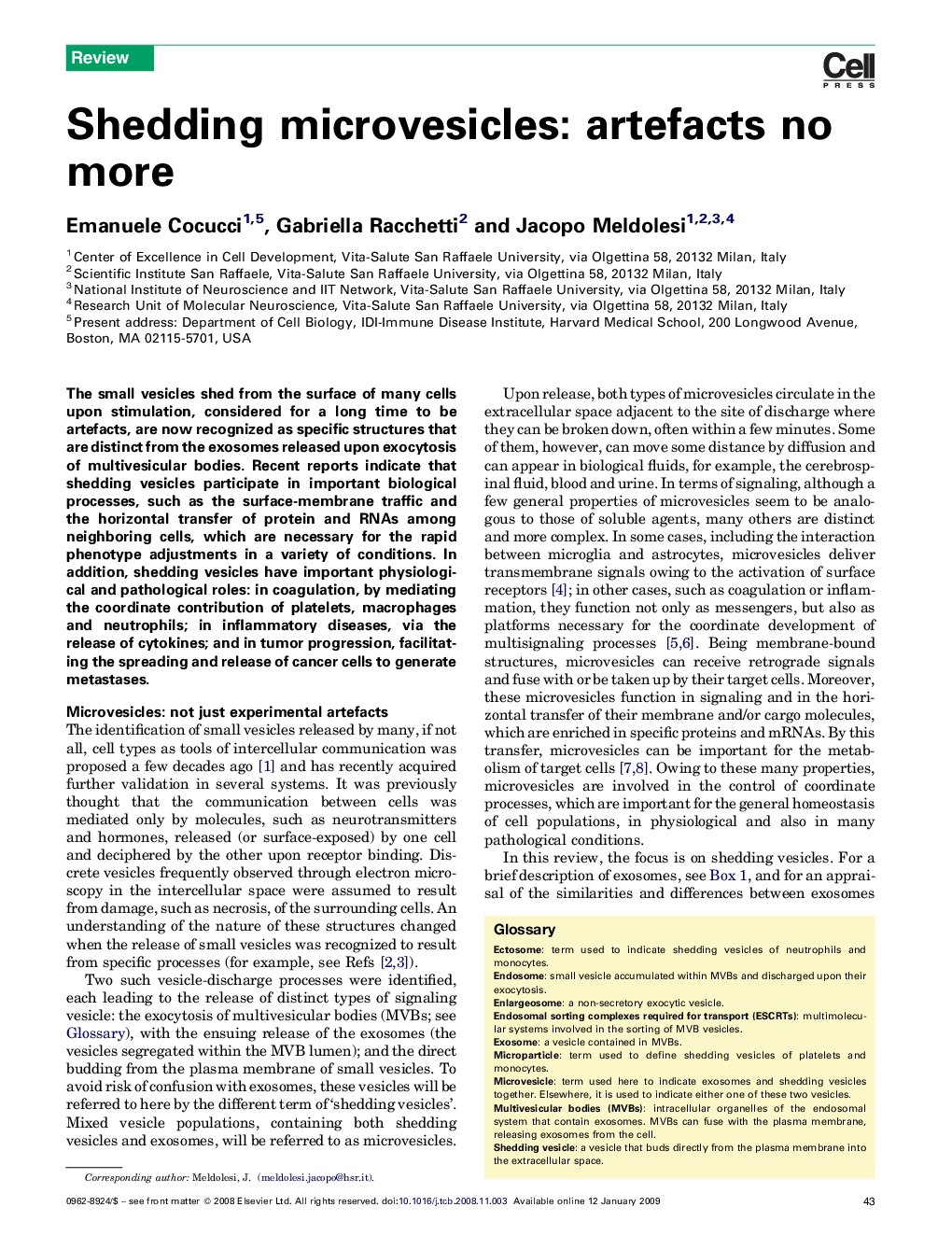| Article ID | Journal | Published Year | Pages | File Type |
|---|---|---|---|---|
| 2205000 | Trends in Cell Biology | 2009 | 9 Pages |
The small vesicles shed from the surface of many cells upon stimulation, considered for a long time to be artefacts, are now recognized as specific structures that are distinct from the exosomes released upon exocytosis of multivesicular bodies. Recent reports indicate that shedding vesicles participate in important biological processes, such as the surface-membrane traffic and the horizontal transfer of protein and RNAs among neighboring cells, which are necessary for the rapid phenotype adjustments in a variety of conditions. In addition, shedding vesicles have important physiological and pathological roles: in coagulation, by mediating the coordinate contribution of platelets, macrophages and neutrophils; in inflammatory diseases, via the release of cytokines; and in tumor progression, facilitating the spreading and release of cancer cells to generate metastases.
